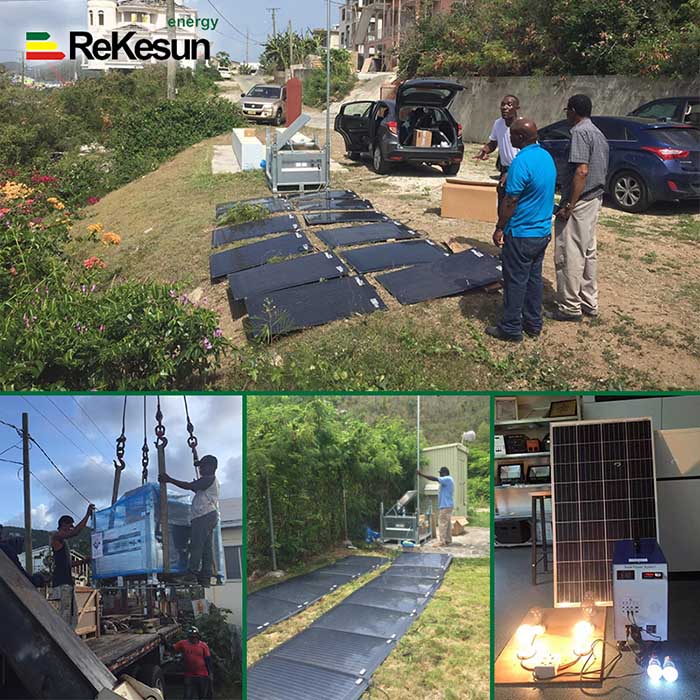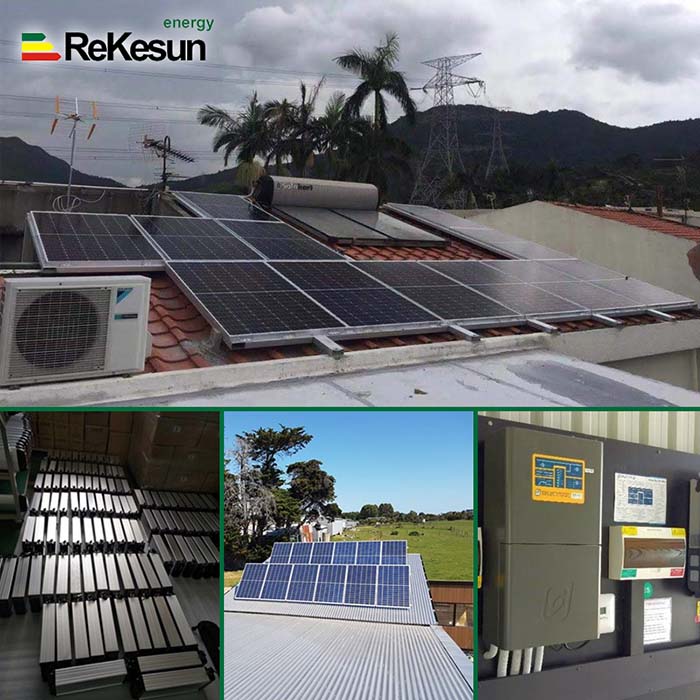Matters needing attention in the safety of Photovoltaic power station
 May 19,2022
May 19,2022

 Rekesun
Rekesun
Safety precautions for photovoltaic power station At the end of each year, safety issues have become an important window period for photovoltaic power plant inspections. Under the conditions of heavy snow in winter, low temperature and severe cold, dry climate, and weakened radiation, we need to pay more attention to photovoltaic power station to make them operate stably to bring sustainable benefits.
What are the hidden dangers of photovoltaic power station? What factors contribute to the loss of power generation? How to avoid it? Let's solve it together with rekesun.

PV plant cables and fire protection are very important
For any engineering project, fire protection comes first. The power carrying of photovoltaic power station relies on AC cables. Generally speaking, the fire hazard of domestic power stations is small. The capacity of such power station is generally between 20kW and 40kW. Although the voltage connected to the grid may fluctuate, the total current is small. For example, the maximum output current of 40kW is about 66A, and the possibility of fire in the power station itself is very small. For large photovoltaic power station, the system output current is relatively large. For example, the total output current of a 2.5MW sub-array exceeds 3000 a, and the inverters used are also relatively large. Before connecting to the box-type transformer, there are usually sub-combining cabinets, and it is recommended to use flame-retardant copper core cables. During plant operation, cables should be checked every six months to ensure good continuity and safety. In winter, the outdoor temperature is low, reaching minus tens of degrees in some areas. Although the cable may be insulated during laying, repeated temperature rises and drops can cause damage to the outer layer of the cable. If found, it should be replaced in time. Check the 4mm DC side² or 6mm² PV special cables for DC side terminals and PV cables, the 4mm² specification is more widely used to fully meet the input requirements of the module current. However, according to feedback from many practical cases, burnout of DC terminals is common, usually caused by loose wire stress during installation.

When daily inspection finds that the DC side terminal is damaged, the terminal with the same specification and model should be replaced in time, and the metal core of the terminal should be pressed tightly. The pressing length should be ≥ 40mm, and pay attention to the positive and negative polarity when connecting. Check for good grounding. According to the technical specifications of relevant photovoltaic power stations, the grounding resistance of lightning protection grounding should generally be between 4 and 10Ω; the grounding resistance of working grounding is generally less than 1Ω. When the total capacity of low-voltage power equipment does not exceed 100kVA, the grounding resistance is not allowed to exceed 10Ω. Its main purpose is to make the surge current enter the ground quickly when lightning occurs, so as to maximize the protection of equipment and personnel from lightning hazards. The ground wire is generally made of metal hot-dip galvanized steel, which should be done during the construction stage of the power station. The commonly used connecting subway is flat steel sheet/steel strip, the general specification is 40mm (width) * 4mm (thickness), the length should be greater than 2.5m, buried underground, and the depth should be greater than 1m to achieve a good admittance effect. If the grounding is not good, not only there are safety hazards, but also ground fault codes often appear, causing the system to stop working. Module cleaning has always been a source of income for photovoltaic power station. There are many impurities in the atmosphere. If it rains and snows, a large number of components will be pressed to the ground or surfaces. Parts are exposed to air. It rains and snows frequently in winter. After covering the components, the output capacity is greatly reduced. If the parts can be cleaned frequently, the output can still be maximized within a limited range of intensities, even if the radiation is reduced.



 Home
Home 15 precautions for the installation and maintenance of hybrid solar inverters
15 precautions for the installation and maintenance of hybrid solar inverters 







 syplighting.en.alibaba.com
syplighting.en.alibaba.com



